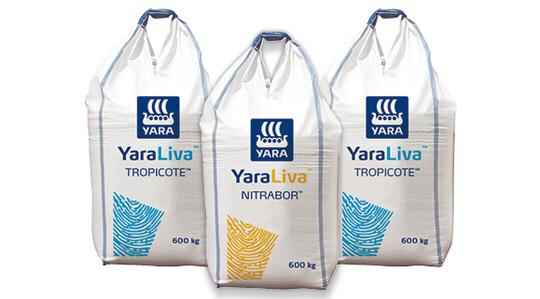No products in the cart.
Return To Shop
0
₦0.00
0
Shopping cart (0)
Subtotal: ₦0.00
Spend ₦500.00 to get free shipping Congratulations! You've got free shipping.
Log in / Sign up
Login Register
Touchdown (Non-Selective Herbi...
₦7,200.00 Original price was: ₦7,200.00.₦6,200.00Current price is: ₦6,200.00.


Agrovert 30:10:10
₦7,700.00 Original price was: ₦7,700.00.₦7,500.00Current price is: ₦7,500.00.
Sale 1%
Yara Liva Calcuim Nitrate (25kg)
₦65,000.00 Original price was: ₦65,000.00.₦64,500.00Current price is: ₦64,500.00.
Calcium nitrate contains both calcium and nitrogen which the plants need to make due as supplements. Calcium is significant for specific plants to have the option to develop seeds and it likewise permits a plant to deliver better organic product quality with a more drawn out time span of usability.
45 people are viewing this product right now
Please, activate Compare option to use this widget.
SKU: yara-liva-calcuim-nitrate-25kg Categories: Agricultural Chemicals, Fertilizer Tags: 25kg, Calcuim, Liva, Nitrate, Yara
Estimated delivery:4 days
Share:
Yara Liva Calcuim Nitrate
Yara Liva Calcium Nitrate contains both calcium and nitrogen which the plants need to make due as supplements. Calcium is significant for specific plants to have the option to develop seeds and it likewise permits a plant to deliver better organic product quality with a more drawn-out period of usability.
Calcium is a fundamental measure of the improvement of plant cell dividers and a great calcium supply in a plant can assist with areas of strength for guaranteeing dividers, safeguarding the plant against illness and stress.
Most ranchers comprehend nitrogen as a fundamental supplement that is required by developing plants in enormous amounts. Nitrogen is an essential part of amino corrosive and chlorophyll creation, and a decent stock of nitrogen will as a rule bring about a rich, green plant that is flourishing. It forestalls bloom-end decay and helps plant development and nourishment.
Lack Symptoms Of Calcium And Nitrogen In Plants
Lack of calcium side effects shows up at first as confined tissue corruption prompting hindered plant development, necrotic leaf edges on youthful leaves or twisting of the leaves, and the inevitable passing of terminal buds and root tips.
For the most part, the new development and quickly developing tissues of the plant are impacted first. The experienced leaves are only every once in a long while because calcium collects to high fixations in more seasoned leaves.[5] lack of calcium in plants is related to diminished levels, fewer hubs, and less leaf region.
A few side effects of nitrogen lack (in nonappearance or low stock) are given beneath :
The chlorophyll content of the plant leaves is diminished which brings about a light yellow tone (chlorosis). More established leaves become yellow.
Blossoming, fruitings, protein, and starch contents are decreased. A decrease in protein brings about hindered development and torpid parallel buds.
Illness
Plants look flimsy, and the condition is called general starvation
Directions To Use Ca(NO3)2.
Calcium nitrate manures can be used as a foliar shower. This is best in treating and hindering vermin and illnesses.
As a side-dress, use 3.5 pounds of Ca(NO3)2 per 100 feet (1.59 kg per 30.48 m). Mix the compost into the dirt, being careful to keep it off of foliage.
Water the region well to allow the compost to start soaking the dirt and track down at a decent speed.
For a foliar sprinkle to address calcium inadequacy and incorporate nitrogen, incorporate 1 cup of calcium nitrate into 25 gallons of water (128 grams to 94.64 liters).
You can similarly use Yara Liva Calcium Nitrate to treat lack of magnesium when it is merged at a speed of 3 to 5 pounds of magnesium sulfate in 25 gallons of water (1.36 to 2.27 kg. in 94.64 liters).
Splash when the sun is low and plants have been watered enough.
Frequently Asked Questions about YaraLiva Calcium Nitrate
What is YaraLiva Calcium Nitrate?
YaraLiva Calcium Nitrate is a fertilizer containing both calcium and nitrogen, essential nutrients for plant growth. Calcium helps with cell wall development, improving stress tolerance and fruit quality, while nitrogen promotes healthy green growth and prevents deficiencies.
What are the benefits of using YaraLiva Calcium Nitrate?
- Provides essential calcium and nitrogen for plant growth.
- Improves cell wall strength, leading to better stress and disease resistance.
- Enhances fruit quality with a longer shelf life.
- Promotes healthy green growth and prevents nitrogen deficiency.
What are the symptoms of calcium deficiency in plants?
- Stunted growth
- Necrotic leaf edges or twisting on young leaves
- Dieback of terminal buds and root tips
- Reduced yield and smaller fruits
What are the symptoms of nitrogen deficiency in plants?
- Yellowing leaves (chlorosis)
- Decreased flowering, fruiting, and protein production
- Stunted growth and weak stems
- Increased susceptibility to disease
How can I use YaraLiva Calcium Nitrate?
YaraLiva Calcium Nitrate can be applied in several ways:
- Foliar spray: Mix 1 cup of calcium nitrate with 25 gallons of water for direct application to leaves, ideal for treating deficiencies and preventing pests/diseases.
- Side-dressing: Apply 3.5 lbs of calcium nitrate per 100 feet of row, mix it into the soil away from plant foliage, and water well to activate the fertilizer.
- Combined deficiency treatment: Mix 3-5 lbs of magnesium sulfate with YaraLiva Calcium Nitrate solution (1 cup per 25 gallons) to address both calcium and magnesium deficiencies.
When is the best time to apply YaraLiva Calcium Nitrate?
Foliar sprays are best applied in the low sun when temperatures are cooler. Apply side-dressings anytime during the growing season.
Only logged in customers who have purchased this product may leave a review.

Reviews
There are no reviews yet.